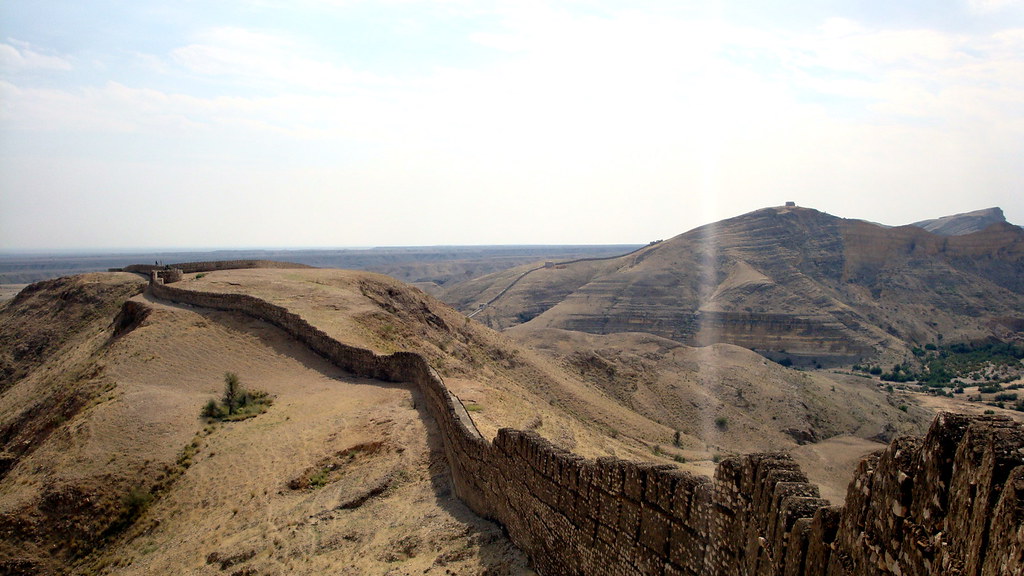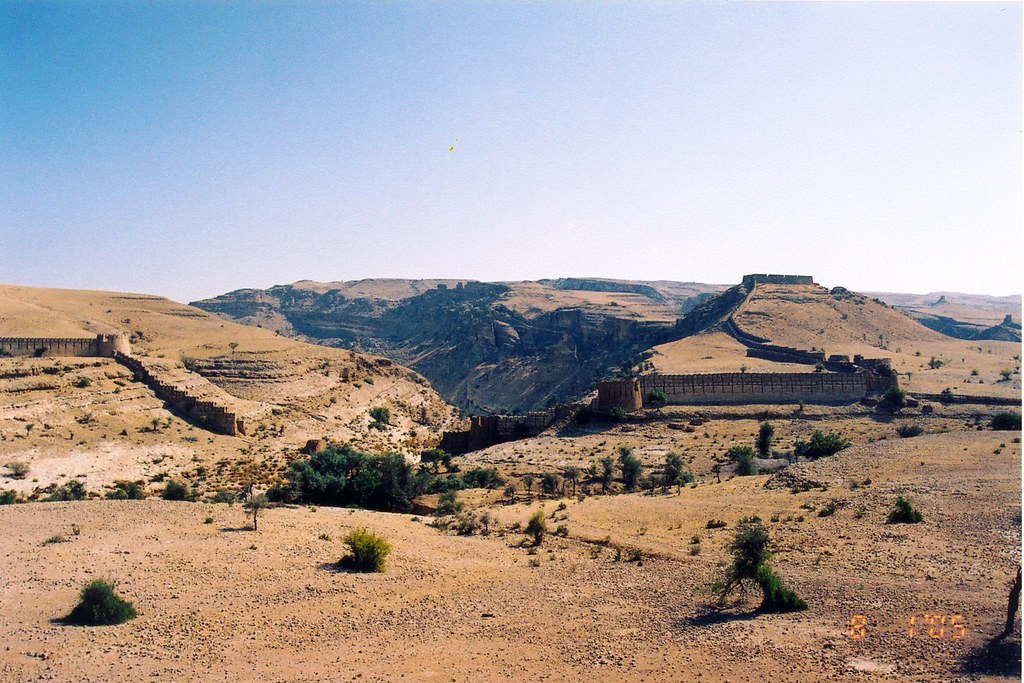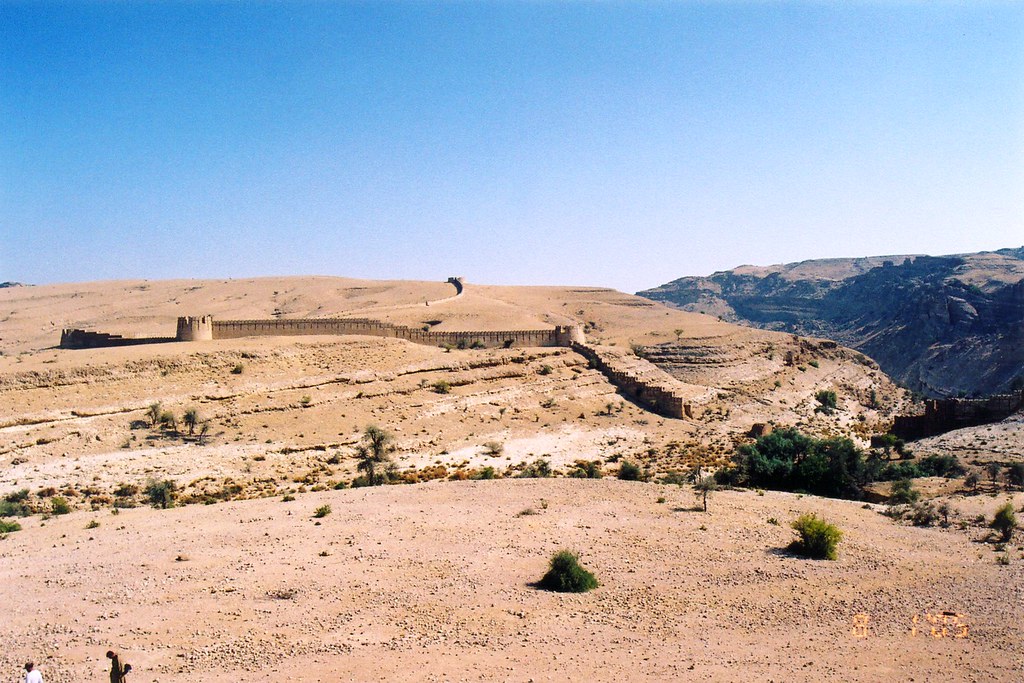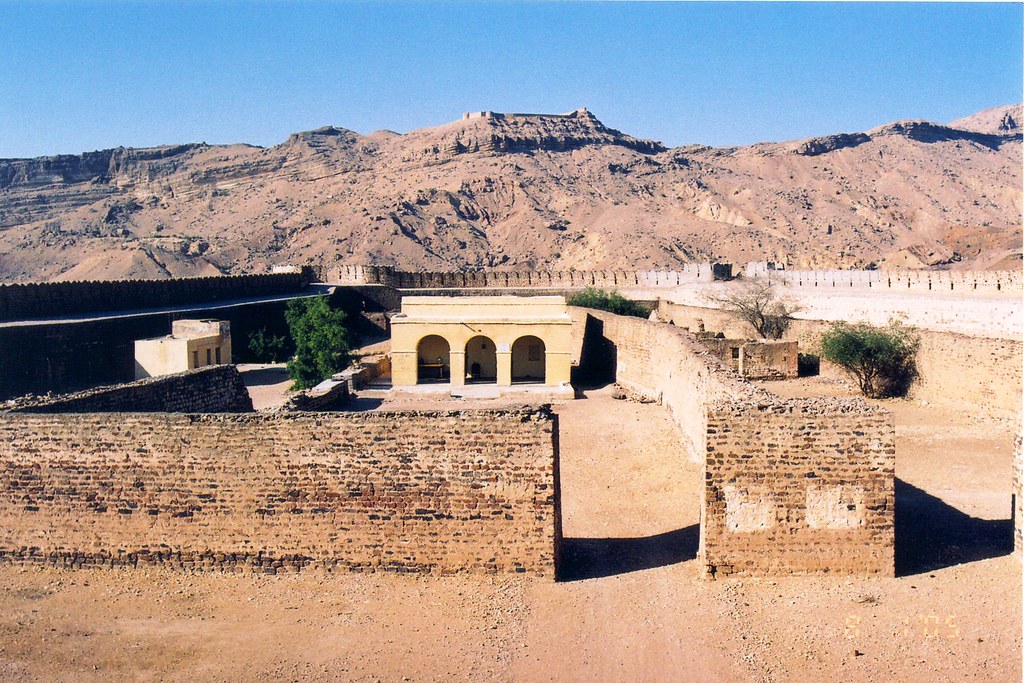ghazi52
PDF THINK TANK: ANALYST

- Joined
- Mar 21, 2007
- Messages
- 101,794
- Reaction score
- 106
- Country
- Location
Some 25 kilometres west of Gujar Khan and over the Sui Cheemian perennial river sits the ancient Sangni Fort. This fort, used for keeping prisoners, is believed to have been built by the Mughals and later occupied by the Dogras of Kashmir and the Sikhs.
There are many such forts and fortresses in the Potohar region, which include the Rohtas, Attock, Pharwala, Rawat, Giri. However, the Sangni Fort, perched on a picturesque location overlooking two rivulets, is most spectacular.

Distant view of the Sangni Fort.
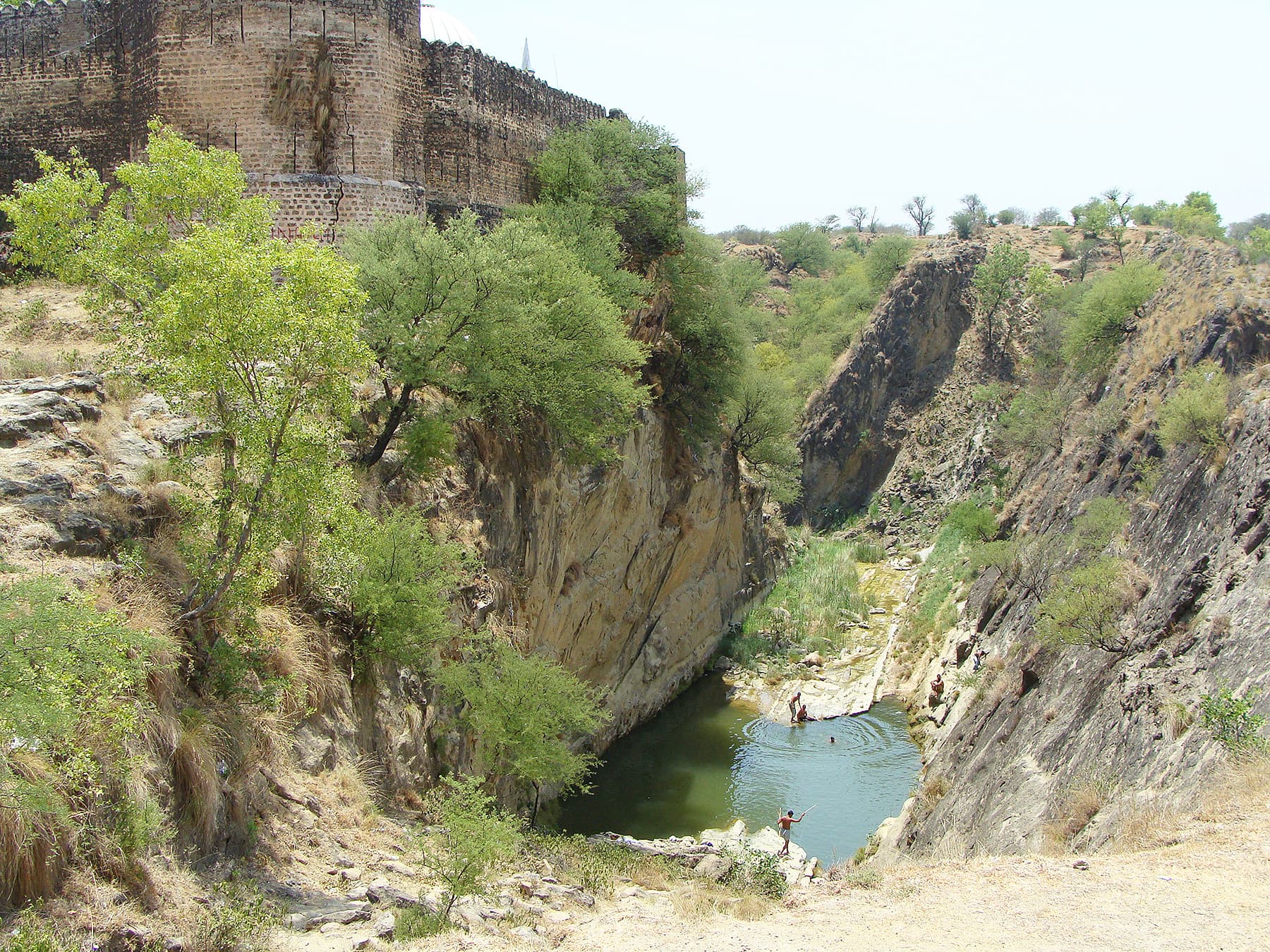
The fort and spring.
It is built over a hill from where one has a panoramic view of several villages, particularly the Sui Cheemian, Dhok Las, etc. The Dhole Las Village is noted for a 17th century necropolis. These graves are constructed of Kanjur stone and possibly belong to some of the soldiers of the Mughal period who were stationed at the fort. Similar graves can also be seen in the Takkal Village with dilapidated funerary enclosure, which possibly belongs to a Mughal administrator of Sangni and neighbouring villages.
The main entrance gate of the fort opens to the east from where one can see as far as the Takkal Village, steps lead to the inside of the fort.
The fort has four bastions of almost equal diameter with stairways reaching the top of the bastions which were used for guarding the fort and its surrounding area.

A closer view of bastions of the fort.

The main gate of the fort.
Located inside the fort is a shrine of Abdul Hakeem. He is believed to have come from Arabia via Iran to preach in the area.

A view of Sangni Fort from the west.

A view of Abdul Hakeem's shrine.
A fabulous specimen of Potohar architecture, the tomb is said to have been built by his disciples.
It has three arched entrances from all directions. The tomb is constructed of marble. The hemispherical dome rests on the square building, the corners of which are decorated with four minarets.
The drum on which the dome rests is adorned with glazed titles. Close to the shrine is situated a mosque, which was also built by disciples of Abdul Hakeem.
The walls of the corridor are decorated with modern ceramics. The interior of the tomb is decorated with glasswork. The glazed tiles and glasswork are essential elements of the modern tomb architecture in Potohar. Almost in every village and town where there are shrines, one is bound to find these two forms of decoration on them.

Modern ceramics on the wall of shrine.

The shrine.
The shrine of Abdul Hakeem attracts hundreds of people every Thursday and Friday. Newly married couples invariably visit the shrine to get the blessings of the saint. People also slaughter animals at the shrine in the hope of getting their wishes fulfilled and as a form of thanksgiving to the saint.
The devotees also take a bath in the spring which is situated west of the fort and is believed to have been a miracle of the saint.
Local people believe that there was no spring in Sangni until water came out from the earth where Abdul Hakeem was buried at the Sangni Fort. The spring never dries. Of the people taking a bath in it, some have illnesses that they hope the water will rid them of; water therapy is still a common practice at various shrines across Potohar.
Like the shrine, the fortress has also been maintained by the devotees of Abdul Hakeem.
There are many such forts and fortresses in the Potohar region, which include the Rohtas, Attock, Pharwala, Rawat, Giri. However, the Sangni Fort, perched on a picturesque location overlooking two rivulets, is most spectacular.

Distant view of the Sangni Fort.

The fort and spring.
It is built over a hill from where one has a panoramic view of several villages, particularly the Sui Cheemian, Dhok Las, etc. The Dhole Las Village is noted for a 17th century necropolis. These graves are constructed of Kanjur stone and possibly belong to some of the soldiers of the Mughal period who were stationed at the fort. Similar graves can also be seen in the Takkal Village with dilapidated funerary enclosure, which possibly belongs to a Mughal administrator of Sangni and neighbouring villages.
The main entrance gate of the fort opens to the east from where one can see as far as the Takkal Village, steps lead to the inside of the fort.
The fort has four bastions of almost equal diameter with stairways reaching the top of the bastions which were used for guarding the fort and its surrounding area.

A closer view of bastions of the fort.

The main gate of the fort.
Located inside the fort is a shrine of Abdul Hakeem. He is believed to have come from Arabia via Iran to preach in the area.

A view of Sangni Fort from the west.

A view of Abdul Hakeem's shrine.
A fabulous specimen of Potohar architecture, the tomb is said to have been built by his disciples.
It has three arched entrances from all directions. The tomb is constructed of marble. The hemispherical dome rests on the square building, the corners of which are decorated with four minarets.
The drum on which the dome rests is adorned with glazed titles. Close to the shrine is situated a mosque, which was also built by disciples of Abdul Hakeem.
The walls of the corridor are decorated with modern ceramics. The interior of the tomb is decorated with glasswork. The glazed tiles and glasswork are essential elements of the modern tomb architecture in Potohar. Almost in every village and town where there are shrines, one is bound to find these two forms of decoration on them.

Modern ceramics on the wall of shrine.

The shrine.
The shrine of Abdul Hakeem attracts hundreds of people every Thursday and Friday. Newly married couples invariably visit the shrine to get the blessings of the saint. People also slaughter animals at the shrine in the hope of getting their wishes fulfilled and as a form of thanksgiving to the saint.
The devotees also take a bath in the spring which is situated west of the fort and is believed to have been a miracle of the saint.
Local people believe that there was no spring in Sangni until water came out from the earth where Abdul Hakeem was buried at the Sangni Fort. The spring never dries. Of the people taking a bath in it, some have illnesses that they hope the water will rid them of; water therapy is still a common practice at various shrines across Potohar.
Like the shrine, the fortress has also been maintained by the devotees of Abdul Hakeem.


















